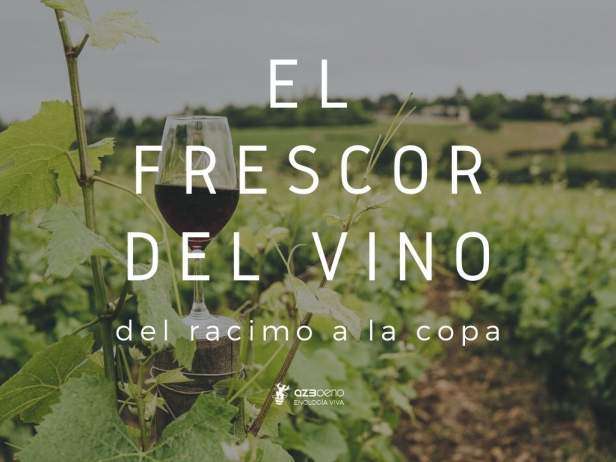
You may have already noticed that this year the path to maturity is not going to be easy, 2020 is turning out to be a self-examination of nature.
The vines develop with good vigor and, despite adversities, they have managed to flower, and we can say that our wine has been started and the exciting journey begins to bring the grape to its optimum maturity.
Reaching the peak of maturity in conditions is like 8,000, anyone can get there, the issue is in what state, fresh and turgid or "done in"?
For the grape to reach the peak of maturity fresh, the plant must arrive well prepared and equipped for the high ground, which is the harvest. Here the die is cast and we can no longer do anything for the quality of the grape other than wait for the weather to behave to reach the top.
But until the harvest when we can act . The path from fruit setting to harvest is metabolically very demanding for the plant, the leaves make the sun's day of solstice and the roots give their all (if the soil temperature allows it) to provide the necessary nutrients, especially those with absorption peaks in this period: K, Ca, N, Mg.
From fruit set to harvest, the vine has to:
- Fatten the grape to reach the pea and grow until the bunch is well closed
- Start the synthesis of pigments, tannins, proteins and aromatic precursors
- Start the berry sugar load
- Prepare to resist weather stress
Its vigor and nutritional balance depends on whether or not it adapts to the climatic conditions of the harvest, and reaches maturity in better or worse conditions.
This year is very peculiar. Cold soils that limit root activity and are very washed out by excessive rains, significant vigor, minimal trace elements, some nutritional imbalances, high humidity in the flowering season and a lot of mildew pressure.
All the numbers are there to cause ripening accidents such as stalk drying (caused by excess N, K/Mg imbalance, lack of Mg) or heterogeneous or insufficient maturation (excess vigor and K deficiencies).
When in a cool and humid year it is difficult for the grape to ripen, it is not because it is cold, the thermal integrals will sooner or later be fulfilled. It is more likely that it is because it lacks K to withstand all the vigor developed.
Between fruit setting and harvest we still have the opportunity to help the vine overcome its imbalances and reach its goal with foliar applications of organic fertilizers.
Up to the halfway point of the harvest we can work on:
- The resistance of the skin providing Ca (ANTYS Ca)
- Improving photosynthesis avoiding chlorosis (ANTYS Fe)
- Avoiding dessication of the stem, providing Mg (ANTYS MgS o MgP)
And up to the end of the harvest:
- Enhancing the maturity and its homogeneity helping with the absorption of K (OSIFOL K o NUTRIKALI)
- Increasing the assimilable nitrogen in the must (NUTRIBIO+)
The freshness, harmony, fruit, fat, etc., of the wine, everything, will develop during this stage. Measuring and closely monitoring the physiology of the plant, interpreting and acting accordingly, is how we can obtain great grapes for great wines.
HAPPY HARVESTING!!!
Related news
THE FRESHNESS OF THE WINE, from the bunch to the glass
The fashion for fresh wines has ceased to be fashion to become a trend; more and more consumers are looking for elegance, length and freshness above all.
More than winemaking machines
The winemaker is the artist who observes the vineyard, interprets it and imagines the wine that could be produced from this plot.
The vineyard, secure stock
One of the virtues of the wine sector is its capacity for self-regeneration and adaptation to overcome the successive crises that history has brought us, each one different, and this is undoubtedly the one which raises the most uncertainties.


